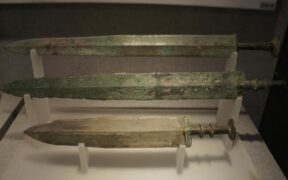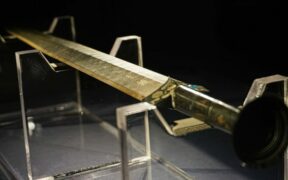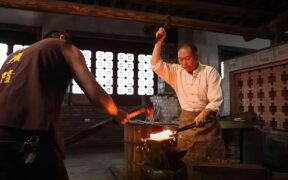Ou Yezi: The Father of the First Iron Sword
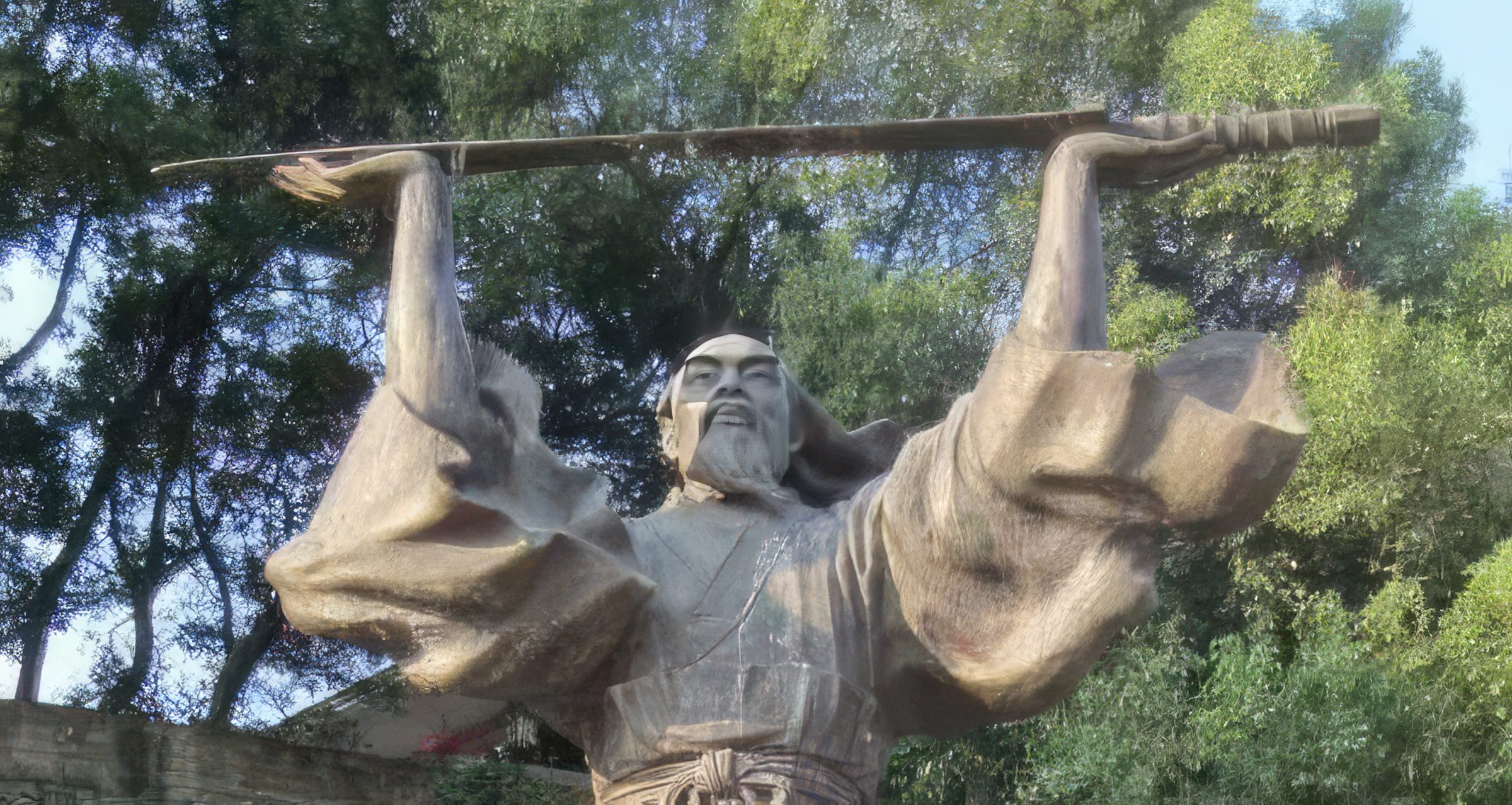
Renowned swordsmiths like the fabled Ou Yezi have played a crucial role in the creation of some of the world’s most iconic weapons.
However, when discovering and learning about ancient weapons that defined history and contributed to the rise and fall of kingdoms, the focus usually falls on the sharpness and strength of those weapons, and how they fared in battle.
Therefore, the bravery and hard work of the smiths who produced them are often overlooked, with some even being lost to history.
In this article, we are going to learn about the history and legacy of Ou Yezi, one of the most legendary swordsmiths in ancient China.
Early Life and History
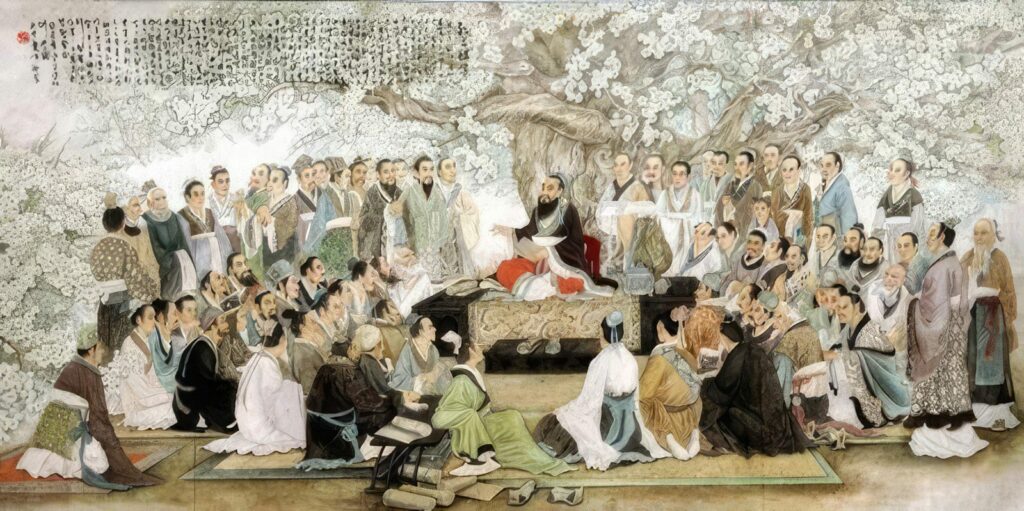
Ou Yezi, a legendary figure in sword-making, lived during the turbulent Spring and Autumn period (770-476 BC).
His birthplace remains uncertain, with claims of either Yue or Chu. He developed an early interest in blacksmithing under his uncle’s guidance, initially making simple tools like axes and hoes.
Recognizing his talent, Ou Yezi shifted focus to master sword-making, a field where he would make significant contributions.
Unsurprisingly, it didn’t take long for his work to become recognized and his name was quickly associated with beautiful and deadly swords that bore intricate designs and razor-sharp edges.
Career and Achievements
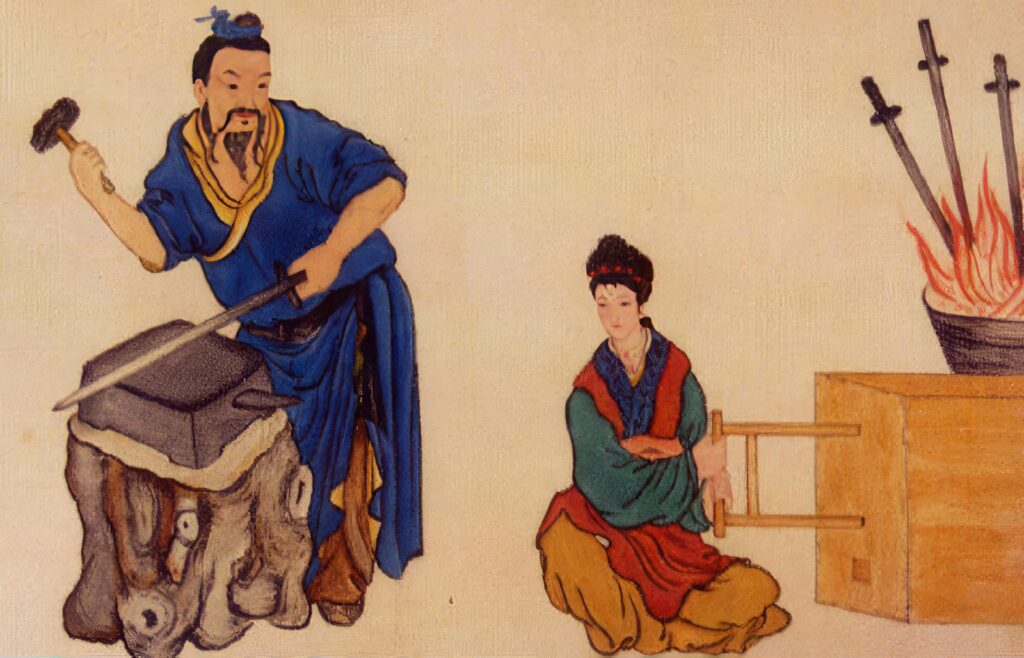
Ou spent most of his life honing his skills and perfecting his craft. He used a traditional technique known as ‘hardening and tempering’ which involved heating the blade to a high temperature before quenching it in water to harden it. The blade was then reheated to a lower temperature and gradually cooled to give it flexibility.
This method produced blades that were both sharp and long-lasting. As a result, they were highly sought after by the nobility of that time.
The First Iron Sword

Legend says King Zhao of Chu commissioned Ou Yezi to make three swords. Seeking ideal conditions, Ou Yezi chose Longquan’s mountains for their ore and springs.
After three years, he crafted the first iron sword, Long Quan, and two others, Tai’e and Gongbu, learning about iron and copper’s properties.
This achievement set a precedent in ancient Chinese sword-making, and Longquan became renowned for its rich natural resources, essential for sword crafting.
The Sword of Goujian
Considered to be the world’s best-preserved sword, the Sword of Goujian is famous for its intricate design, durability, and sharpness. However, its origin remains a mystery to this day, with different theories and speculations being offered by historians.

According to one legend, the sword was commissioned by King Goujian of Yue.
The history of the war between Yue and Wu is a legendary conflict where two neighboring kingdoms were pitted against each other in a struggle for power and territory. During one of their many battles, King Goujian of Yue was captured by King Fuchai of Wu and was held captive for three years.
Although he was eventually released, upon his return, it is believed that King Goujian sought out Master Ou and ordered the creation of a sword that would symbolize his determination to enact his revenge. According to the legend, Ou worked tirelessly to produce a masterpiece worthy of Goujian’s aspirations.
This sword was discovered during an archeological survey in the Hubei province in 1965. Today, it is recognized as a national treasure of China and serves as a testament to the masterful technique that was displayed during its creation.
Legacy
Ou Yezi’s legacy as a master swordsmith has endured for more than two thousand years. With many different legendary Chinese swords being directly attributed to his name, he continues to captivate sword enthusiasts around the world. Some of these swords include:
- Long Quan – The first iron sword belonging to King Zhao of the state of Chu.
- Tai’e – Also known as the ‘sword of supreme harmony’, it is considered to be one of the best swords of its time.
- Gongbu – Referred to as the ‘sword of justice’, it belonged to King Zhao’s general Zhang Fei.
- Yuchang – Named after its first owner, General Yu Chang, this sword is believed to have been an omen of good fortune.
- Shengxie – This is one of the few swords believed to be crafted from meteorite iron during the Spring and Autumn period.
- Zhanlu – Based on legend and folklore, this was a legendary sword that was wielded by the Chinese general Guan Yu.
- Sword of Goujian – The world’s best-preserved sword, legend says it was commissioned by the King of Yue who wanted to use it to reclaim his old territories.
The master craftsman isn’t revered for his collection of swords alone, however. His methods and techniques bear great significance as well. They have inspired many swordsmiths to study his craft, resulting in Ou’s traditional techniques being passed down from generation to generation.
Conclusion
In conclusion, Ou Yezi was a master swordsmith during one of China’s most turbulent periods and his work has endured for over two thousand years. His devotion to his art, attention to detail, and commitment to excellence are testaments to the human spirit and the pursuit of greatness. His legacy will undoubtedly continue to influence future generations.
